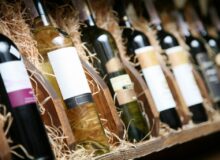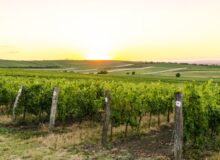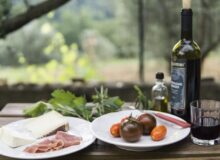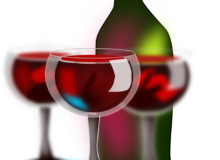A friend of mine is going to Germany this fall and asked me to give him some info on German wines. I asked him if he preferred dry wines or sweet wines. He said “dry”. So, I told him; “if you see the word ‘Trocken’ on the bottle, It means it is a dry wine. It will say it right on the bottle.”
But there is a whole lot more too German wines. The labels are gothic with long never-ending words, but really it’s not too hard to get a hold of the basics. But like most wine labels; all the information is packed in there.
I will give you some tips that I hope helps… Anyways it’s Springtime and that which is the time for tasty whites.
When you first look at a German wine. I as I said earlier; check to see if the label has the word ‘Trocken’… If it does… it’s a dry wine. Also, check the alcohol level. If the alcohol level is 11%, 12% or higher; it is most likely a dry wine.
There are many regions in Germany. Those regions have their style and nuances. It is almost a profile…
Let’s get started by comparing the regions:
Mosel, Saar, Ruwer: An exciting wine, with peach, minerality and from time to time has floral notes; it also has a real zippy acidity.
Pfalz, Baden, Württemberg: Full bodied and fatter wines, with ripe, sharp fruit and a strong backbone of acidity. You see more good Pinot Noir (Spatburgunder) from these areas because it’s a little cooler.
Nahe, Mittelrhein, Franken: The wine is clear and clean, it’s vibrant with some mineral and likely to have steely metallic notes.
Rheingau: Elegant wines that are sleek, smooth and measured and some-times very serious.
Rheinhessen: a wine brimming with fresh fruit and wet stones, mineral and sometimes strong metallic and iron-like tones.
The German’s are also sticklers for Quality and have developed a system for Quality. But the old and out of date system is essentially flawed;…so you can’t always rely on it. It is more of a loose guide to go along with the profiles and styles just discussed earlier.
There are four quality levels;
Qualitätswein, or QbA(which is seen the the USA);
and the supposedly superior, Prädikatswein, or QmP.
If you the letters VDP. That is a level that is completely different
Members of the VDP, or Verband Deutscher Prädikatsweingüter, a group of wineries, that rebelled against the system and created their own. The results up to debatable.
…remember, Generally, the VDP-logo itself indicates superior quality at all levels.
The VDP categories are:
Gutswein: are the estate wines, dry
Ortswein: are the village wine (from dry to sweet)
Erste Lage: are first growth (which can be from dry to sweet), and they are from a single classified site
Grosse Lage: basically means grand cru (from dry to sweet), from a single classified site. Dry wines from a Grosse Lage can be labelled as Grosses Gewächs. The top-class dry wines have the VDP logo and the phrase Grosses Gewächs. Remember the VDP-logo means superior quality at all levels.
Take note of another main thing to look out for…The “Ripeness” of the wine. The German’s track that too (remember “Ripeness” does not necessarily mean sweetness):
Sometimes QmP, the label will include a Prädikat, one of five levels of ripeness level at harvest which might help you with picking a style you like.
The Five Levels of Ripeness are:
Dry Riesling are, from least ripe to most ripe: Kabinett, Spätlese and Auslese.
Kabinett: Light, with delicate structure, lots of fruit, noticeable aromas and lower alcohol.
Spätlese: a lot more textured, rounder with more full-bodied mouthfeel than Kabinett.
Auslese: Much bigger in body and substance, often powerful and textured, but no fat. These can cellar for 20 years or more!
Beerenauslese:Which really means ‘berry select’ such as harvested berry by berry which brings the wine up to desert wine category,
Trockenbeerenauslese: here is where you need to bay attention…The ‘Trocken’ means ‘dry berry select’, shriveled with botrytis…so it is a intensely sweet wine and complex dessert wine.
Bonus:
There are the popular and famous frozen grape wines Eiswein…
They are real sweet and have so much of that acidity. The sweetness levels are like the Trockenbeerenauslese (you might see halbtrocken on a bottle, which means half dry, when they play with the sweetness levels…)
I am sure I’ll hear from my friend after this. But go ahead and take this out for a spin and seek some German wines today!







